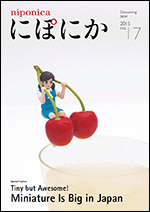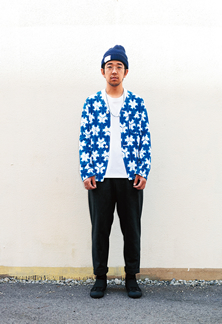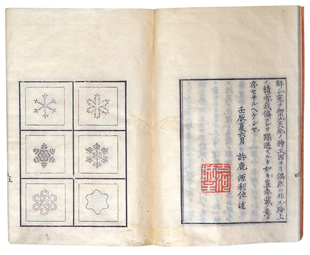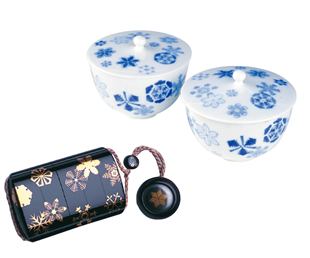niponica is a web magazine that introduces modern Japan to people all over the world.
2015 No.17

To read the e-book you need to have JavaScript enabled in your browser and a free Flash Player plug-in from Adobe Systems Inc. installed.
Miniature Is Big in Japan

A Fashion Motif Inspired by the Microscope
Snow crystal motifs in trendy Edo

Ukiyoe woodblock print of a woman in kimono with snowflake motif. Print name: Edo no matsu meiboku zukushi oshiage myoken no matsu (“Pines at Oshiage-myoken: Old Trees of Historical Interest in Edo”). Art by Keisai Eisen. Property of the Koga History Museum.

The shirt is a creation of today’s fashion, but the snowflake motif dates from centuries earlier. (Collaboration: Needles; Uneven General Store)
During the Edo period (1603-1868), snowflakes held such a fascination for one feudal lord that he got the nickname, “The Lord of the Snows.” His name was Doi Toshitsura (1789-1848), the lord of the Koga Domain (in present-day Ibaraki Prefecture). He was the first person in Japan to study snow crystals under a microscope, in research that stretched over two decades. He called snow crystals “sekka,” which literally means “snow flowers,” and published his observations in the book Sekka Zusetsu (“An Illustrated Study of Snow Crystals”) in 1832. Explaining 14 beneficial effects of snow and illustrating 86 types of snow crystals, his book and its sequel are highly regarded as Japan’s first natural science treatises on snow.
Interestingly, the delicate beauty of the stylistic snow patterns found in Toshitsura’s research soon became all the mode among the common people during the Edo period. These patterns treated snow crystals as flowers, and were used to add grace to kimono and accessories. This fashion trend of old Japan is seen vividly in many of the ukiyoe bijin-ga woodblock prints of beauties wearing sekka motif kimono. The fad was a case of microscope-inspired design, a crystallizing example of how early modern Japan took to the leading science and technology of the day. Even during our own modern times, “snow flower” patterns remain a popular motif, evoking a fashion trend of Edo. Snowflake motifs naturally decorate small Japanese-style accessories, yet it is interesting to find them also on T-shirts, running shoes and other contemporary items.
A page from Sekka Zusetsu (“An Illustrated Study of Snow Crystals”) by Doi Toshitsura, the man nicknamed “Lord of the Snows.” Property of the Koga History Museum.
Top: 19th century cups for green tea. The snowflake pattern fad even influenced decorative art for containers. Cup name: Yuki no kessho moyo senchawan (“Green Tea Cups with Snow Crystal Pattern”). (Photo: Takeo Nabeshima Family Archives; property of Takeo City)
Bottom: Inro container. Object name: Sekkamon makie inro (“Snow Crystal Pattern Makie Inro”). Made by Hara Yoyusai, a famous makie artist of the Edo period. Property of the Koga History Museum.




